Key takeaways
- Gentle parenting emphasizes respect and empathy, fostering a trusting relationship through communication instead of punishment.
- Setting boundaries with empathy helps children understand limits as nurturing rather than punitive, promoting self-regulation and respect.
- Active listening and using positive language in conversations create an environment where children feel valued and can express their emotions openly.
- Balancing discipline with affection allows children to see discipline as a caring guide rather than rejection, strengthening their sense of security and trust.
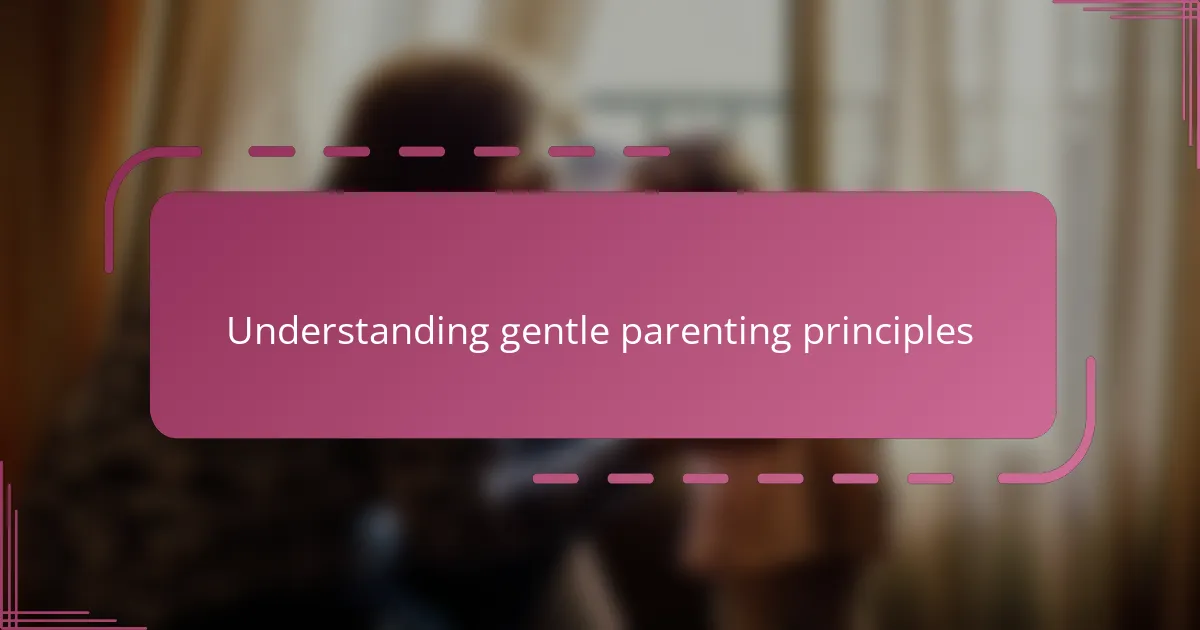
Understanding gentle parenting principles
Understanding gentle parenting principles means recognizing that respect and empathy form the foundation of how we relate to our children. I remember early on feeling frustrated, but embracing patience helped me see my child’s perspective more clearly, transforming our daily interactions.
Have you ever paused to consider how your tone or choice of words impacts your child’s sense of security? For me, shifting from punishment to communication created a more trusting and open relationship, making challenges feel less like battles and more like opportunities for connection.
At its core, gentle parenting is about guiding rather than controlling, nurturing a child’s emotional growth while acknowledging their individuality. When I started practicing this, I noticed not only my child’s comfort but also my own—it’s a learning curve that calls for kindness to both of us.
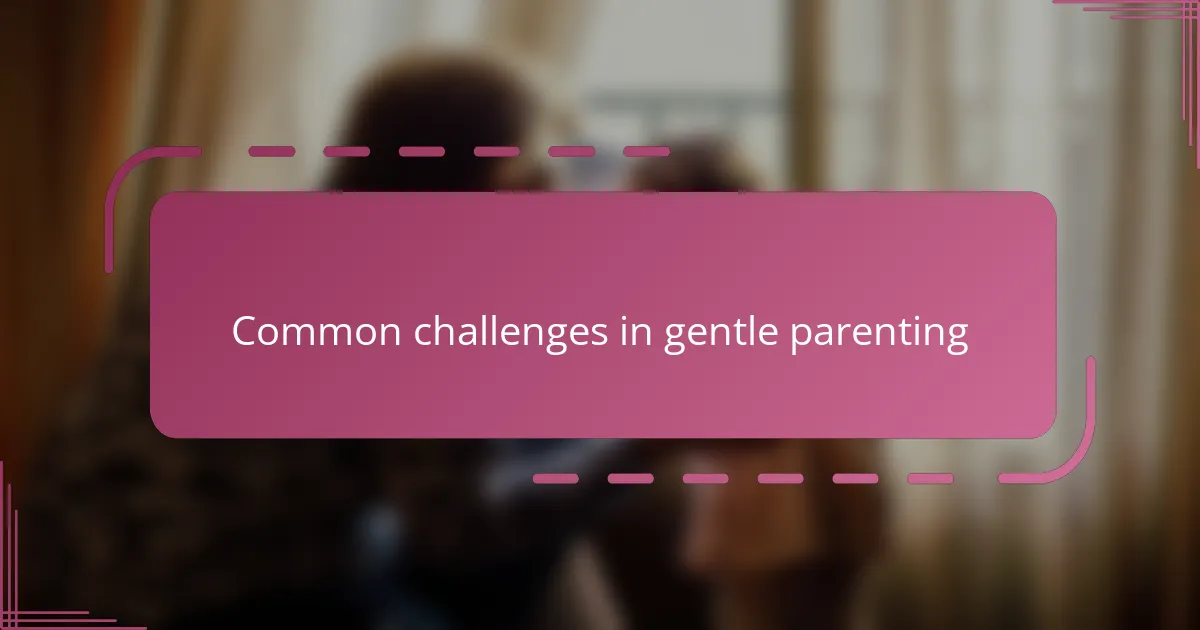
Common challenges in gentle parenting
One challenge I often faced was managing my own emotions during tough moments. Have you ever tried to stay calm when your child is having a meltdown? It wasn’t easy for me at first, but I realized that taking a deep breath before responding made all the difference in maintaining that gentle approach.
Another hurdle was balancing firmness with kindness. It felt confusing to set boundaries without sounding harsh. I had to remind myself that being gentle doesn’t mean being permissive; it means communicating limits with empathy and clarity, which actually helped my child feel safer and more understood.
I also struggled with feeling isolated. Gentle parenting sometimes goes against common advice from others, and I questioned myself often. But over time, hearing my child express their feelings openly showed me that the challenges were worth it—those moments of trust became my motivators to keep going.
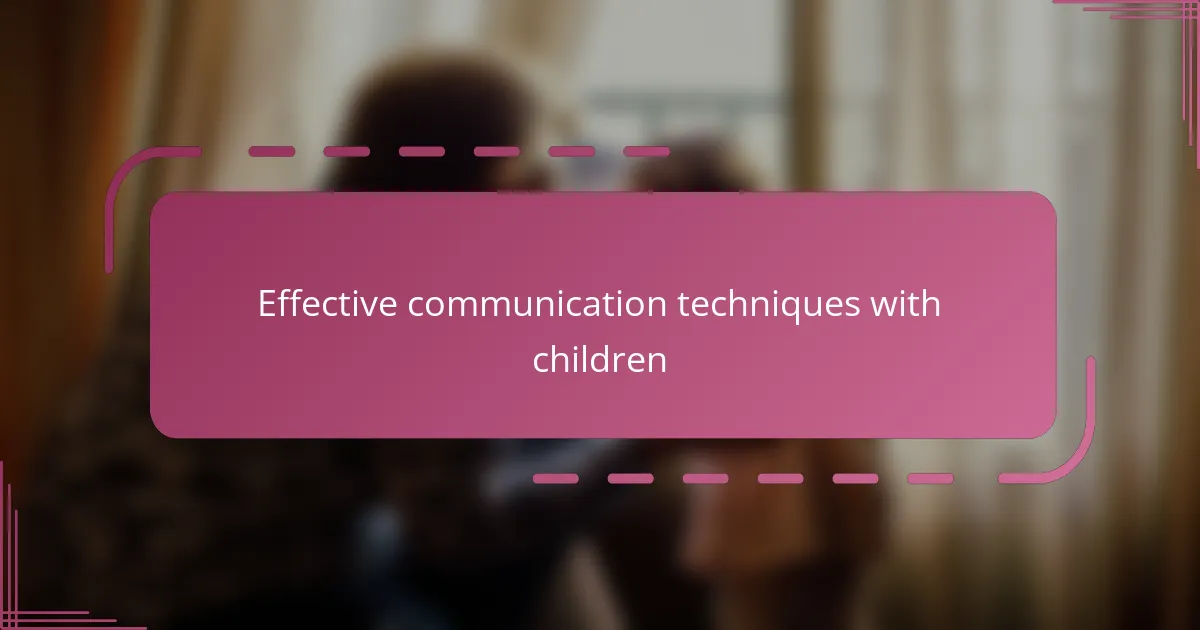
Effective communication techniques with children
When I first started focusing on how I spoke to my child, I realized that active listening was a game-changer. Have you noticed how children can sense when you’re truly paying attention? I found that by really tuning in—making eye contact and repeating back what they said—it made my child feel valued and more willing to open up.
Sometimes, choosing my words carefully felt like walking a tightrope. How do you explain rules without sounding like you’re ordering around? I learned to use positive language, like saying “Let’s try to keep the toys on the shelf” instead of “Don’t make a mess.” This subtle shift softened the message and kept the conversation collaborative.
I also discovered that patience in communication isn’t just for my child—it’s for me, too. When my little one struggled to express big feelings, waiting quietly instead of rushing to fix things showed her that all emotions were okay. That pause often led to deeper understanding and fewer tantrums on both sides.
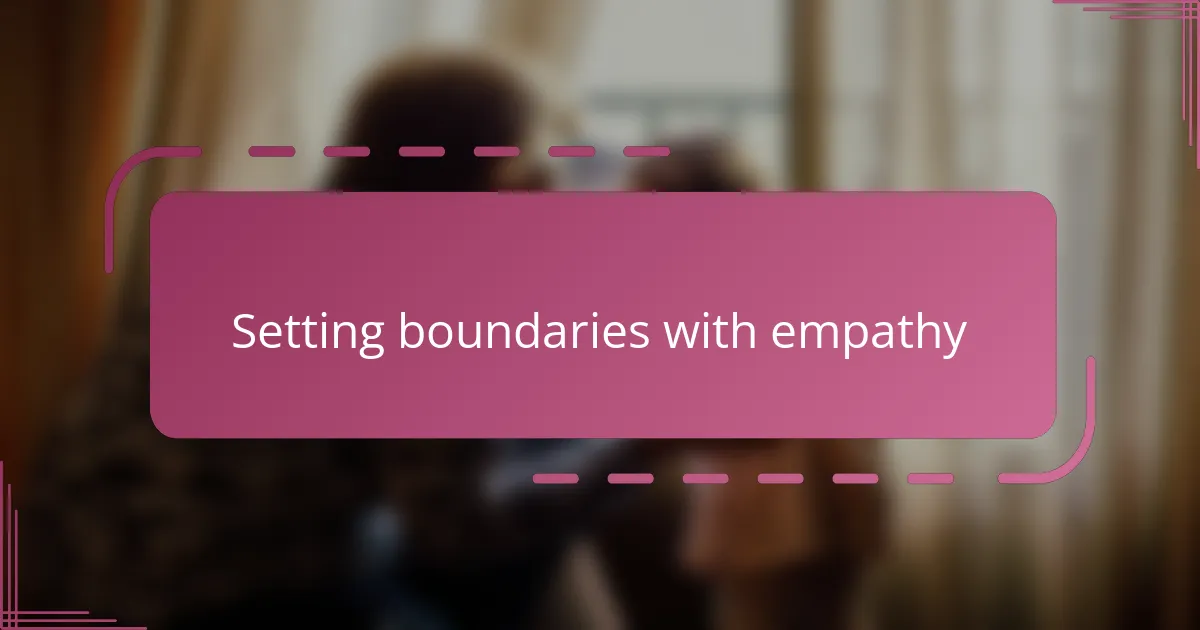
Setting boundaries with empathy
Setting boundaries with empathy was a steep learning curve for me. Have you ever felt torn between saying no and wanting to comfort your child? I found that acknowledging my child’s feelings before stating a limit helped ease the tension—simply saying, “I know you want to play longer, and that’s hard, but bedtime is now,” created more cooperation than a flat no ever did.
At times, I worried that being empathetic would make me seem weak or inconsistent. But I realized that empathy doesn’t mean giving in; it means connecting. When I explained why a boundary existed in a calm and understanding way, my child seemed to respect it more—as if the boundary had meaning instead of being just a rule.
What really changed the game for me was remembering that boundaries aren’t just about keeping my child safe—they’re about teaching them self-regulation and respect. By staying patient and compassionate, even during pushback, I saw my child’s confidence grow, knowing that limits come with love, not punishment.

Handling tantrums calmly
When my child’s face crumpled into a full-blown tantrum, I had to remind myself to stay grounded. Have you ever felt like reacting quickly, only to realize it would escalate things? I learned that taking a moment to breathe and tune into what my child was really feeling often helped me respond with calmness instead of frustration.
It wasn’t easy at first—watching a meltdown without trying to “fix” it felt uncomfortable. But I noticed something powerful: by staying present and gentle, my child began to feel safer expressing big emotions. Sometimes, simply saying, “I’m here with you,” made all the difference and helped the storm pass more quickly.
I also discovered that offering choices during a tantrum, like “Would you like to sit here or take a quiet break?” gave my child a sense of control when everything felt overwhelming. Have you tried that approach? For me, it turned moments of chaos into chances for connection and taught my little one that their feelings mattered—not just their behavior.
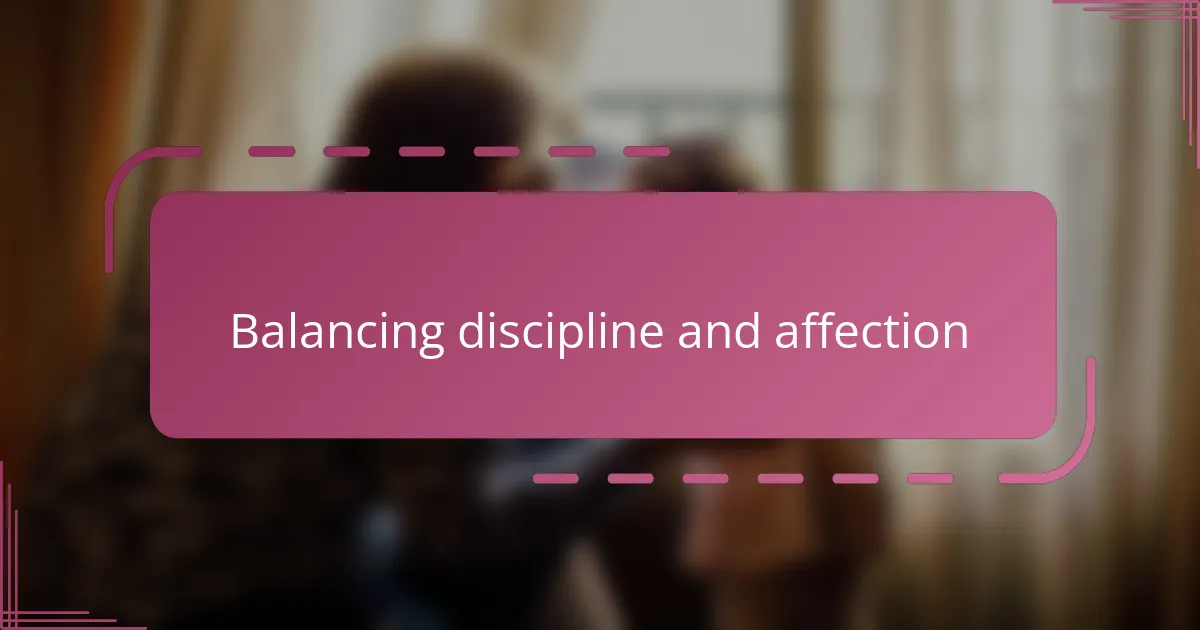
Balancing discipline and affection
Balancing discipline and affection felt, to me, like walking a fine line between being firm and being warm. Have you ever worried that setting limits might make your child feel unloved? I found that showing affection before and after reinforcing a boundary helped my child understand that discipline wasn’t about rejection—it was about care and guidance.
At times, I caught myself hesitating, unsure whether to respond with a gentle reminder or a more direct correction. What helped me was remembering that discipline grounded in empathy doesn’t diminish love; it actually strengthens trust. When I combined a calm tone with clear expectations, my child seemed more willing to cooperate without feeling upset.
One moment that sticks with me is when my child tested a rule but responded positively because I acknowledged their feelings first. Saying something like, “I see this is frustrating, but we have to follow this rule,” made all the difference. It showed me that discipline infused with affection isn’t contradictory—it’s the heart of gentle parenting.


